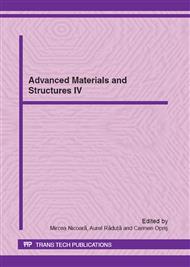p.314
p.318
p.324
p.330
p.339
p.346
p.352
p.361
p.369
Increase the Ingots Quality Cast in Vacuum
Abstract:
Most often, product quality is based on purity and homogeneity. To meet these conditions secondary metallurgy was developed including different methods for steel refining, but more important is the choice method of casting and its components. Casting metal melts is one of the key points that can ensure the desired product quality. Depending on the castings complexity, to obtain a high quality material several methods of casting have been developed. One of the most common methods of pouring large ingots is vacuum casting because the metal bath is protected from reoxidation. Another advantage of vacuum casting of steel ingots is achieving wide stream by injecting inert gas (Ar), this stimulates the floating of inclusions and prevents convection currents forming in the metal bath. This wide jet creates particularly advantageous conditions in the degassing process by increasing surface contact between vacuum and molten metal, managing to achieve maximum efficiency of removing gas and lowering the inclusion content. Like other methods of casting metals, besides the benefits of obtaining a quality material some disadvantages may influence the future products. One of the great disadvantages that can lead to scrap is the formation of a crown on the spray limiter during casting. Crowns get formed from non-metallic inclusions obtained from the "washing" the spray limiter. During ingot vacuum pouring because of the contact between steel and spray limiter pieces fall from the formed crown representing a powerful source of exogenous inclusions which can reject the finished product in non-destructive checks. Experimental research presents interesting information on the causes of crown formation and the solutions applied to avoid its formation.
Info:
Periodical:
Pages:
339-345
Citation:
Online since:
May 2012
Authors:
Price:
Сopyright:
© 2012 Trans Tech Publications Ltd. All Rights Reserved
Share:
Citation:


